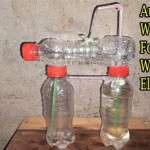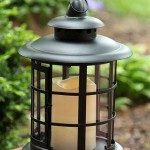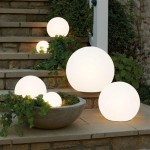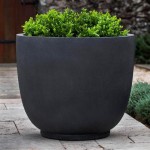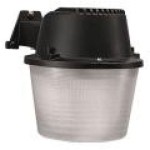What Is The Best Outdoor Heater For Patio?
The pursuit of the "best" outdoor patio heater is subjective, contingent upon individual needs, preferences, and specific patio environments. Numerous factors contribute to this determination, including heating capacity, fuel source, portability, safety features, aesthetic appeal, and budget. A comprehensive understanding of these aspects is crucial for making an informed decision that aligns with desired outcomes.
Outdoor heaters extend the usability of patios and other outdoor spaces, allowing individuals to enjoy fresh air and open-air environments even during colder months. They offer a practical solution for homeowners, restaurants, and other businesses seeking to maximize the utility of their outdoor areas throughout the year. The investment in an appropriate outdoor heater can significantly enhance the comfort and ambiance of any patio.
Selecting the optimal outdoor heater requires careful consideration of the area's size, climate, and intended use. Understanding the intricacies of different heater types, their respective advantages, and disadvantages is paramount. A thorough evaluation of available options will lead to a selection that provides efficient and reliable heating while meeting specific needs and aesthetic requirements.
Factors to Consider When Choosing an Outdoor Patio Heater
Several critical factors influence the selection of the best outdoor patio heater. These encompass heating power, fuel type, portability, safety, design, and cost. Each element plays a significant role in determining the suitability of a particular heater for a specific patio environment.
Heating Power (BTUs): The heating power of an outdoor heater is typically measured in British Thermal Units (BTUs). A higher BTU rating signifies a greater capacity to generate heat. The required BTU output depends on the size of the patio and the prevailing climate. Larger patios and colder climates necessitate heaters with higher BTU ratings. In general, a small patio (100-150 square feet) might require a heater with 10,000-20,000 BTUs, while a larger patio (300-400 square feet) could need upwards of 40,000 BTUs or more. Understanding the relationship between patio size, climate, and BTU output is essential for selecting a heater that provides adequate warmth. Heaters with adjustable heat settings offer flexibility to adapt to varying weather conditions.
Fuel Type (Propane, Natural Gas, Electric): Outdoor heaters operate using various fuel sources, each with its unique set of advantages and disadvantages. Propane heaters are portable, independent of electrical outlets, and offer significant heating power. However, they require a propane tank, which needs periodic refilling. Natural gas heaters provide a continuous fuel supply, eliminating the need for refills, but require a permanent connection to a natural gas line. Electric heaters are clean, quiet, and require no fuel storage, but their heating power may be limited. They also require access to an electrical outlet and can be more expensive to operate depending on electricity costs. The choice of fuel type depends on individual preferences, availability of fuel sources, and desired level of portability.
Portability: The portability of an outdoor heater is crucial for versatility and ease of use. Some heaters are designed for permanent installation, while others are easily movable. Portable heaters, such as propane-powered models with wheels, offer the flexibility to reposition the heater as needed. Tabletop heaters are also highly portable and suitable for smaller patios or outdoor dining areas. Permanently installed heaters, such as natural gas models, offer a more stable and reliable heating solution for fixed locations. The need for portability hinges on the intended use and the frequency with which the heater will be moved.
Safety Features: Safety is a paramount concern when selecting an outdoor heater. Look for models equipped with safety features such as automatic shut-off mechanisms that activate in the event of tipping or overheating. Protective screens or guards should also be present to prevent accidental contact with hot surfaces. Check for certifications from reputable safety organizations, such as UL (Underwriters Laboratories) or CSA (Canadian Standards Association), to ensure the heater meets established safety standards. It is also important to follow manufacturer's instructions regarding clearance from combustible materials. Regular maintenance and inspection of the heater are essential for ensuring safe operation.
Design and Aesthetics: The design and aesthetics of an outdoor heater contribute to the overall ambiance of the patio. Heaters are available in a wide range of styles, from traditional to contemporary, to complement different outdoor decors. Considerations include the material (stainless steel, powder-coated steel, etc.), shape (mushroom, pyramid, etc.), and finish (bronze, black, silver, etc.). Tabletop heaters, with their compact size and elegant designs, are well-suited for smaller patios and outdoor dining settings. Freestanding heaters, with their larger size and more prominent presence, can serve as focal points in larger outdoor spaces. The selection of a heater that complements the existing patio furniture and landscaping enhances the overall aesthetic appeal.
Cost (Initial and Operational): The cost of an outdoor heater encompasses both the initial purchase price and the ongoing operational expenses. Propane heaters typically have a lower initial cost but require the periodic purchase of propane tanks. Natural gas heaters have a higher initial cost due to the need for professional installation of a gas line, but the cost of natural gas is often lower than propane. Electric heaters may have a moderate initial cost, but the operational cost depends on the local electricity rates. Consider both the upfront investment and the long-term fuel or electricity costs when evaluating different heater options. Energy-efficient models can help reduce operational expenses. Also, consider maintenance costs for the long term.
Types of Outdoor Patio Heaters
The outdoor heater market offers a diverse selection of heater types, differentiated by their fuel source, design, and heating mechanism. Common types include propane heaters, natural gas heaters, electric heaters, and fire pits.
Propane Heaters: Propane heaters are popular choices for patios due to their portability and high heating output. They utilize propane tanks as their fuel source, providing flexibility and independence from electrical outlets. Propane heaters are available in various sizes and designs, including freestanding models, tabletop heaters, and wall-mounted units. Their portability allows for easy relocation, making them suitable for dynamic outdoor settings. However, propane heaters require regular refueling of the propane tank, and the cost of propane can fluctuate. Safety features like tip-over switches are essential for propane heaters. Maintenance includes regular inspection of the propane tank and connections to prevent leaks.
Natural Gas Heaters: Natural gas heaters offer a continuous and convenient heating solution for patios with access to a natural gas line. They eliminate the need for refueling and provide a consistent fuel supply. Natural gas heaters are typically more expensive to install due to the requirement of a gas line connection, but the lower cost of natural gas compared to propane can offset the initial investment over time. Natural gas heaters are available in freestanding and wall-mounted models. Professional installation is recommended to ensure proper and safe connection to the gas line. Natural gas heaters are generally considered more environmentally friendly than propane heaters due to lower carbon emissions.
Electric Heaters: Electric heaters are clean, quiet, and easy to operate, making them suitable for smaller patios and enclosed outdoor spaces. They require access to an electrical outlet and provide instant heat with the flick of a switch. Electric heaters are available in various types, including infrared heaters, quartz heaters, and radiant heaters. Infrared heaters are energy-efficient, directing heat directly to objects and people without warming the surrounding air. Quartz heaters provide quick and intense heat, while radiant heaters offer a more gentle and even heat distribution. Electric heaters are generally less powerful than propane or natural gas heaters and may not be suitable for larger or exposed patios. The operational cost of electric heaters depends on the local electricity rates.
Fire Pits: Fire pits offer both warmth and ambiance to outdoor spaces, creating a focal point for gatherings and relaxation. They are available in various designs, including wood-burning fire pits, propane fire pits, and natural gas fire pits. Wood-burning fire pits provide a traditional and rustic feel but require a supply of firewood and produce smoke. Propane fire pits offer a cleaner and more convenient alternative, with adjustable flame height and easy ignition. Natural gas fire pits provide a continuous fuel supply and eliminate the need for propane tanks. Fire pits require careful attention to safety, including maintaining a safe distance from combustible materials and supervising the fire at all times. Fire pits are subject to local regulations regarding open fires, so it is important to check with local authorities before installing one.
Key Features to Look For
Beyond the basic types, specific features enhance the functionality, safety, and user experience of outdoor patio heaters. These features differentiate models and contribute to user satisfaction.
Adjustable Heat Settings: Adjustable heat settings provide flexibility to customize the heating output based on weather conditions and personal preferences. This feature allows users to conserve energy and maintain a comfortable temperature without overheating. Heaters with multiple heat settings offer greater control over the heating environment. Some models feature remote controls for convenient adjustment of heat settings from a distance.
Remote Control: Remote control operation adds convenience and ease of use to outdoor heaters. Users can adjust the heat settings, turn the heater on or off, and control other functions without having to physically approach the unit. Remote controls are particularly useful for heaters that are mounted high or located in hard-to-reach areas.
Tip-Over Protection: Tip-over protection is a crucial safety feature that automatically shuts off the heater if it is accidentally knocked over. This prevents fire hazards and protects individuals from potential burns. Tip-over switches are commonly found in propane and electric heaters.
Overheat Protection: Overheat protection is another essential safety feature that shuts off the heater if it reaches an unsafe temperature. This prevents damage to the heater and reduces the risk of fire. Overheat protection is particularly important for electric heaters, which can overheat if they are blocked or restricted.
Weather Resistance: Weather resistance is a key consideration for outdoor heaters, as they are exposed to the elements throughout the year. Look for models made from durable materials, such as stainless steel or powder-coated steel, that can withstand rain, snow, and sun exposure. Water-resistant or waterproof ratings indicate the level of protection against moisture. A durable and weather-resistant heater will last longer and require less maintenance.
Automatic Shut-Off Timer: An automatic shut-off timer allows users to set a specific time for the heater to turn off automatically. This feature conserves energy and provides peace of mind, especially if the heater is accidentally left on unattended. Automatic shut-off timers are commonly found in electric heaters.
Warranty: A manufacturer's warranty provides protection against defects in materials and workmanship. A longer warranty period indicates greater confidence in the product's quality and durability. Read the warranty terms and conditions carefully to understand the coverage and limitations.
Ultimately, the best outdoor patio heater is the one that best satisfies the individual's requirements considering all the factors discussed. By carefully weighing the different options and features, a heater can be selected that will provide years of comfort and enjoyment.

The 2 Best Outdoor Patio Heaters Of 2024 Reviews By Wirecutter

The 2 Best Outdoor Patio Heaters Of 2024 Reviews By Wirecutter

The 2 Best Outdoor Patio Heaters Of 2024 Reviews By Wirecutter

10 Best Patio Heaters And Outdoor In 2024

10 Best Patio Heaters And Outdoor In 2024

10 Best Patio Heaters And Outdoor In 2024

The 2 Best Outdoor Patio Heaters Of 2024 Reviews By Wirecutter

Best Patio Heaters Of 2024 Cnet

Best Patio Heaters Of 2024 Cnet

10 Best Patio Heaters To Buy In 2024 Electric And Gas Heat Lamp
Related Posts

